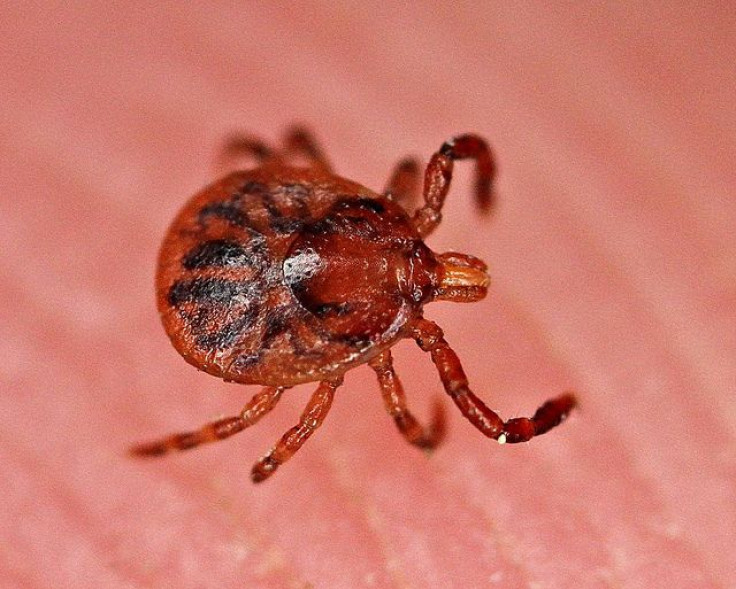There's A New Species Of Bacteria That Can Cause Lyme Disease: CDC

The unpleasant roster of tickborne pathogens is officially welcoming a new member.
This Monday, the Centers for Disease Control and Prevention, in conjunction with the Mayo Clinic and local health officials, announced the discovery of a new, if related, bacterial species capable of causing Lyme disease in people. The species, given the interim moniker of Borrelia mayonii, is the first new species unambiguously connected to Lyme in North America, though there are other species that cause a variant of Lyme elsewhere. Prior to the discovery, only Borrelia burgdorferi was definitively linked to Lyme on this side of the Atlantic. The study detailing the discovery was published in Lancet Infectious Diseases over the weekend as well.
"This discovery adds another important piece of information to the complex picture of tickborne diseases in the United States," said senior author Dr. Jeannine Petersen, CDC microbiologist, in a statement.
The Great Imitator
Complex is right.
To sum up as best we can: Traditionally, Lyme, or more formally borreliosis, in North America is thought to be caused by the germ specifically called B. burgdorferi. But globally, Lyme is caused by a wide-ranging subset of bugs related to B. burgdorferi, each with their own demographical range, choice of insect vectors (though it’s usually ticks), and symptoms. The latter partially explains why Lyme is also considered the "Great Imitator," capable of mimicking all sorts of other illnesses. In research circles, the big group of bacterial species that cause Lyme is called B. burgdorferi sensu lato, while the North American germ is called B. burgdorferi sensu stricto (it's also found in Europe).
Some research has suggested, however, that other Borrelia species spread by ticks can cause illnesses similar to Lyme — in areas of the country typically not associated with Lyme, such as the south. But many researchers, including at the CDC, have hesitated to bunch these cases together underneath the wider Lyme definition, due to conflicting evidence. This latest study then is the first bit of research on a potential new Lyme species to receive a stamp of approval from the CDC.
The Mayo Clinic researchers tested the clinical diagnostic specimens (blood and joint fluid) of people suspected to have Lyme from 2003 to 2014, specifically looking for a gene, oppA1, that belongs to the group of germs related to B. burgdorferi. They also collected samples of the tick known to spread Lyme stateside, Ixodes scapularis (deer tick), in areas where they suspected the patients were infected.
Out of the more than 100,000 specimens looked at, six showed signs of a particularly abnormal oppA1 gene when compared to specimens containing B. burgdorferi. As for the patients themselves, five presented signs of fever; four had a distinct rash; three had neurological symptoms; two ended up hospitalized; and the sixth had knee pain and swelling. Further testing confirmed the bacteria found in these people was indeed a previously unrecognized species and they were even able to find B. mayonii in nearby deer ticks.
The evidence of B. mayonii infection only dates back to 2012, with no samples having been found before then, and only from the states Minnesota, Wisconsin, and North Dakota, indicating the germ’s range may solely cover the Upper Midwest. Though these infections resembled classic Lyme in many ways, the rash seen in them was widely spread as opposed to a "bull’s-eye" rash. Infected patients were also likely to have additional nausea and vomiting and an especially high concentration of bacteria in their blood.
According to the CDC, it’s likely people infected with B. mayonii will test positive for Lyme under the current battery of diagnostic tests, with only further testing distinguishing between the two. Thankfully, it doesn’t appear to be any harder to take care of than classic Lyme, already reliably treatable with antibiotics. All six patients successfully recovered.
The CDC will continue working with the Mayo Clinic and the health departments of Minnesota, Wisconsin, and North Dakota to further understand B. mayonii as well as discover other tickborne illnesses. "CDC is investing in advanced technology to bring study of tickborne infections into a new era," said Dr. Ben Beard, chief of CDC’s Bacterial Diseases Branch. "Coupling technology with teamwork between federal, state, and private entities will help improve early and accurate diagnosis of tickborne diseases."
Earlier this January, a new study found the population of ticks capable of spreading Lyme has noticeably increased since the turn of the millenium, with others speculating that warmer climates are playing a part in the increase.
Source: Pritt B, Mead P, Johnson D, et al. Identification of a novel pathogenic Borrelia species causing Lyme borreliosis with unusually high spirochaetaemia: a descriptive study. Lancet Infectious Diseases. 2016.



























